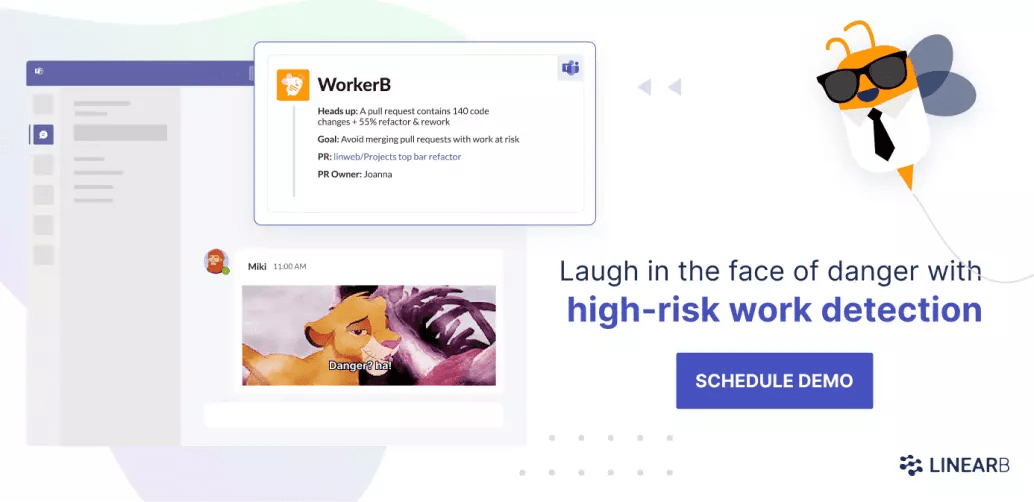In the words of economist Charles Issawi, a shortcut is the longest distance between two points.
This quip is especially pertinent in software development, where taking the quick and easy approach can often lead to extensive rework and heavy technical debt – which, in turn, results in higher costs and project delays.
Read on to learn what technical debt is, why it occurs, why it’s a problem, and some metrics and tools that you can use to track and reduce technical debt in your team.
What Is Technical Debt?
One of the most common examples of technical debt occurs when a developer leverages someone else’s code, such as a library or a snippet from Stack Exchange. There are many others, and recently on the Dev Interrupted podcast, Founder and CEO of OutSystems, Paolo Rosado, shared the three most common causes of technical debt he has seen.
Developers incur technical debt because it allows them to complete projects faster and with less effort. But it can also potentially lead to security and performance issues if the developer doesn’t test and monitor the code they implement.
If you want to get more specific about quantifying technical debt, be sure to check out our posts on measuring technical debt and the technical debt ratio (TDR).

Why Technical Debt Is Dangerous
Almost all engineering teams have some form of technical debt. In some cases, tech debt is unavoidable. But just like financial debt, technical debt can compound and become worse over time – especially for teams that use agile development and constantly iterate on their software.
High technical debt means that overall development cost – the amount of resources it takes to add new features – is higher. Technical debt can become a serious a drag on your development throughput.
Technical debt compounds and can sneakily become so sizeable that one day you have no choice but to start paying it down in order to move forward.
Technical debt leads to code rot, and if you aren’t careful, tech debt can lead to extensive refactoring and high remediation costs. It can also degrade application performance and open the door to cybersecurity vulnerabilities.
Add it all up, and it’s critical to minimize technical debt whenever possible and prevent it from negatively impacting your applications.
Technical Debt Metrics to Consider
Here’s some good news: You don’t need to spend a fortune to measure technical debt. In fact, there are a variety of metrics that you can use to track technical debt for free using open-source software.
As you begin searching for an open-source solution to help solve your technical debt problems, keep the following metrics on your radar.
1. Code Quality
Code can become increasingly complex over time, especially when multiple team members contribute to the same application. Applications also tend to increase in complexity following mergers and acquisitions when different product leaders take ownership.
Code quality metrics assess the overall complexity and quality of your code by tracking dimensions like lines of code and class coupling. This allows you to spot and weed out instances of bad code.
2. Cycle Time
Cycle time is a measurement of the total time that it takes between the first commit and the point where software goes into production. It is the “uber metric” – the most important metric and the one that all others feed into. That’s why you need to be measuring it. With LinearB, you can easily get an accurate cycle time calculation, presented to you in a chart that you can parse at a glance.
You should strive to have minimal cycle times to push new updates into production faster.
3. Rework
It’s important to go deeper and look at the sub-metrics that determine your cycle time. A key one is rework (also called code churn), which is recently-shipped code that has been rewritten.
A high rework rate indicates that your developers are spending a significant amount of time fixing problems, which could indicate that you have a significant amount of technical debt. As such, it’s a good idea to track and measure code rework over time. If your engineers are continuously deleting and replacing code, then you need to investigate to figure out why that’s happening.
LinearB makes this easy to do. You can track the amount of rework in the codebase as a whole and in individual portions. Our WorkerB will alert you, in real-time, when there is a delta with a lot of rework so that you can have the chance to intervene and avoid adding technical debt.
 Want to eliminate risky behavior around your PRs? Book a demo of LinearB today.
Want to eliminate risky behavior around your PRs? Book a demo of LinearB today.
4. Code Ownership
Engineering teams often run into trouble when they lose track of which individuals are working on which parts of the codebase. Without clear project or code ownership, it can be difficult to track changes over time and fix underlying issues. When this happens, team members often look for easy fixes to complicated problems.
The easy way to avoid this type of problem is to track code ownership across different projects. When you know what engineers are working on, it becomes easier to troubleshoot and iterate on your applications.
Tracking code ownership can also alert you when minor contributors make code changes. Such individuals are more likely to make mistakes, which can require extensive rework and increase technical debt.
![]()
5. Cohesion
Code cohesion is an architectural measurement that you can use to track how well individual components work together inside a software system. In general, you should aim to have high cohesion.
If your code lacks cohesion, it could be a sign that you need to rebuild certain parts of your software to improve performance and stability.
6. New vs. Closed Bugs
You can also measure technical debt by tracking how many bugs your team discovers and closes.
When a large volume of bugs appears, it’s a sign that there’s a lot of underlying technical debt. Consistently high volumes of bugs may indicated that team members are making quick fixes without addressing the underlying causes.
Open-Source Tools for Measuring Technical Debt
As you can see, there are several types of metrics that you can use to measure and reduce technical debt. And there are many great tools available that can provide a thorough analysis of your code and engineering strategy.
Many of these tools cost money. But with the help of free, open-source tools, you can easily track and reduce technical debt in a way that is fast, cost-effective, and reliable.
With all this in mind, let’s take a look at a few of our favorite open-source tools for managing technical debt.
SonarQube
SonarQube is an open-source platform that continuously inspects code quality and security.
With SonarQube, you can measure the code coverage of your tests, catch bugs before they slip into production, and close vulnerabilities that could lead to costly security incidents.
The platform lowers technical debt by providing greater visibility into your underlying codebase. At the same time, by helping you ship cleaner code, it helps you avoid time-consuming rework later on.
Checkstyle
Checkstyle is another open-source code analysis tool that programmers can use to write Java code and follow a coding standard.
This tool spares developers from manually checking Java code. As a result, the likelihood of developers skipping over lines of code decreases, and there’s a lower chance that they’ll move quickly and miss important issues. Taken together, Checkstyle can speed up the development lifecycle and reduce time-consuming fixes.
WhiteSource
WhiteSource provides automated monitoring and customizable reporting for powerful application security.
By using WhiteSource, you can easily discover and remediate vulnerabilities. The tool can also identify all open-source components and provide real-time security and license alerts.
LinearB’s Approach to Technical Debt
LinearB is an automated workflow analytics platform designed to help you track end-to-end production and improve performance and output. We make it easy to identify workflow bottlenecks and create a culture of continuous improvement using metrics and quality insights to drive projects forward.
We offer a free tier that provides metrics for up to eight team members – making it an ideal fit for small engineering teams that want to enhance workflows without breaking the bank.
Our refactor and rework metrics can provide deep visibility into engineering processes and help you spot technical debt. Using these insights, your team can produce software at a faster pace while reducing finger-pointing and confusion. In addition, you will be able to identify inefficiencies, continuously improve team performance, and plan your development cycles more accurately.






